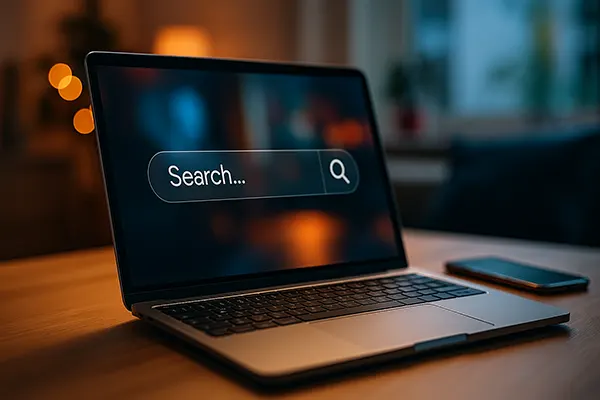Conversion SEO: Turning Traffic into Clients Through Low-Funnel Content

In 2025, conversion-focused SEO has evolved from simple keyword targeting to strategic content systems built around user intent and behavioural psychology. Businesses no longer chase random traffic — they invest in content that transforms visitors into loyal customers by reducing friction across the funnel. This approach is now central to sustainable digital growth and measurable ROI.
Understanding Conversion SEO in 2025
Conversion SEO is the process of optimising online visibility while ensuring that the audience arriving through search is ready and motivated to take action. Rather than focusing solely on top-of-funnel queries like “what is” or “how to”, marketers now prioritise low-funnel intent — the searches made by users close to a purchase decision. These pages attract smaller but far more valuable segments of traffic.
In 2025, successful SEO strategies combine data-driven segmentation with real-world understanding of customer needs. Tools powered by AI predict intent shifts, helping content creators craft copy that aligns with buyer expectations at each stage of their journey. This reduces wasted impressions and increases conversions without inflating acquisition costs.
Low-funnel optimisation also depends on trust. Users who are ready to buy need reassurance: transparent pricing, authentic reviews, and evidence of expertise. Brands that invest in this type of content build stronger relationships and longer customer lifetime value, as visitors perceive them as reliable rather than purely transactional.
How Low-Funnel Content Drives Results
Low-funnel content bridges the gap between SEO visibility and actual sales. Instead of general articles, it includes detailed product comparisons, case studies, and testimonials that address last-minute doubts. This content type is designed not to educate broadly but to validate the purchase decision with clear, verifiable arguments.
According to 2025 industry data, landing pages optimised for transactional intent have an average conversion rate of 6–8%, compared to 1–2% for informational posts. The difference lies in content structure: strong calls to action, integrated trust signals, and contextual internal links guiding the user directly to checkout or sign-up forms.
Additionally, marketers now use heat mapping and session replay analysis to refine low-funnel experiences. Understanding how users interact with CTAs, forms, and reviews helps eliminate barriers. As a result, conversion SEO no longer ends at ranking; it continues through the entire decision-making process, optimising every step for commitment.
Content Strategies That Convert
Modern conversion SEO strategies revolve around precision and personalisation. High-performing brands in 2025 create adaptive content ecosystems where every page serves a defined role in the funnel. This requires understanding user intent categories — informational, navigational, commercial, and transactional — and crafting tailored copy for each stage.
At the conversion stage, copywriters apply micro-conversion tactics: integrating trust badges, social proof, and limited-time offers. These small psychological nudges reinforce urgency and reliability without resorting to manipulative language. A well-written FAQ section addressing pricing, security, and delivery remains one of the strongest drivers of final action.
Another crucial element is the alignment between SEO and UX. Content that ranks but loads slowly or overwhelms the user visually will still lose sales. The most successful brands measure not only organic sessions but engagement metrics like dwell time, form completion rate, and assisted conversions — holistic signals of SEO effectiveness in 2025.
Using Data and AI for Better Conversion Paths
Artificial intelligence has made predictive SEO more actionable. By analysing behavioural data from CRM systems and analytics dashboards, marketers can forecast which search intents generate revenue and which simply drive noise. Machine learning models recommend specific keyword clusters and content formats that historically produce the highest ROI.
Personalisation is also enhanced through AI-generated user segmentation. For instance, visitors returning via branded queries may see different copy or offers compared to first-time searchers. This dynamic approach transforms static landing pages into responsive conversion environments that evolve with audience behaviour.
Furthermore, automation helps scale A/B testing of meta tags, headlines, and CTAs. Continuous optimisation based on live results ensures that content remains competitive even as search algorithms and consumer patterns shift. In essence, AI turns SEO into an adaptive system that learns and improves with each interaction.

Building Trust Through Content Credibility
Trust has become the ultimate conversion factor. Google’s E-E-A-T principles — Experience, Expertise, Authoritativeness, and Trustworthiness — continue to influence ranking and engagement outcomes. Content that lacks transparency or appears autogenerated struggles to convert, regardless of traffic volume or keyword strength.
Authentic proof of expertise includes citing verifiable data sources, naming authors with relevant credentials, and publishing genuine user feedback. Brands that demonstrate accountability foster emotional security, which is critical when users must share payment details or personal information. In 2025, audiences expect clarity — not marketing gloss.
Finally, conversion SEO success depends on post-click experience. Once users interact with your site, every detail matters: consistent messaging, intuitive navigation, and secure checkout flow. This alignment of promise and delivery transforms ordinary optimisation into customer retention — the most valuable form of conversion.
Key Takeaways for Sustainable Growth
Conversion SEO is not about traffic quantity but about turning the right traffic into measurable outcomes. Focusing on user intent, content integrity, and data-driven testing produces sustainable performance that survives algorithm updates. Brands must see SEO not as a ranking game but as a revenue discipline.
To succeed in 2025 and beyond, prioritise clarity over complexity. Create content that answers real questions, provides transparent value, and supports the user at the exact moment of decision. This is how low-funnel strategies build trust and ensure consistent business growth.
Ultimately, conversion SEO reflects a wider shift in digital marketing: from attraction to connection. It’s no longer about being visible — it’s about being chosen. When users feel informed and confident, conversion happens naturally, and loyalty follows.
